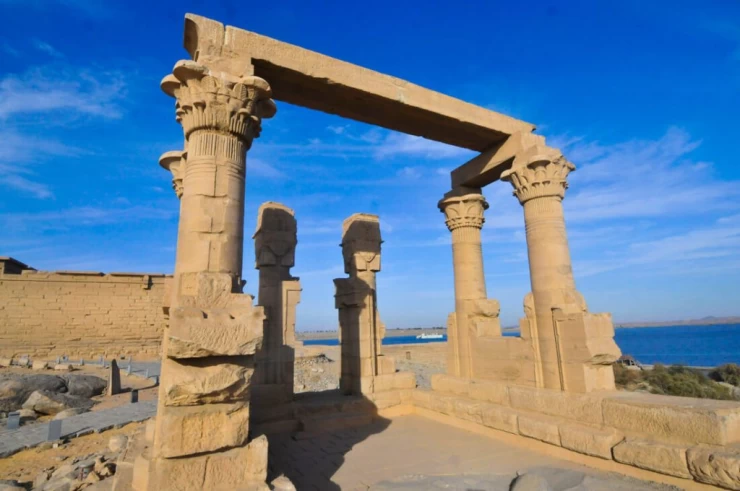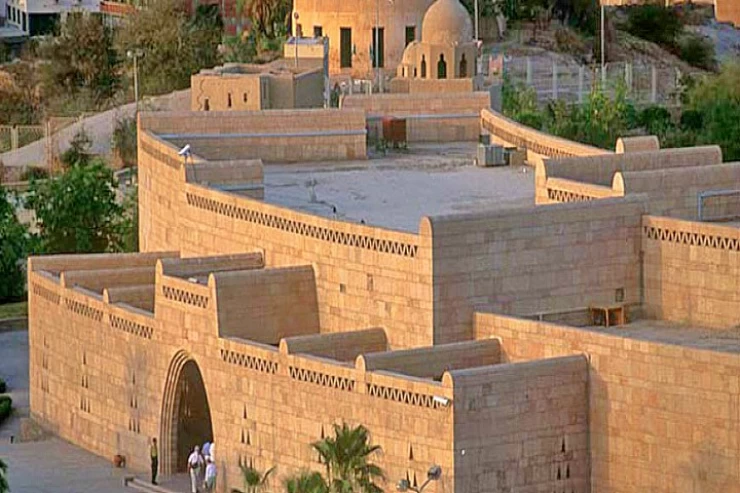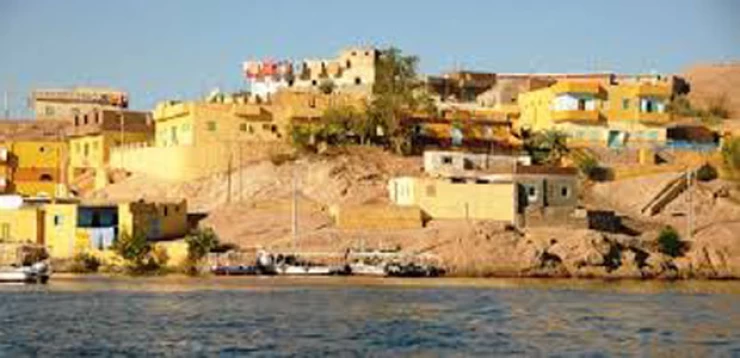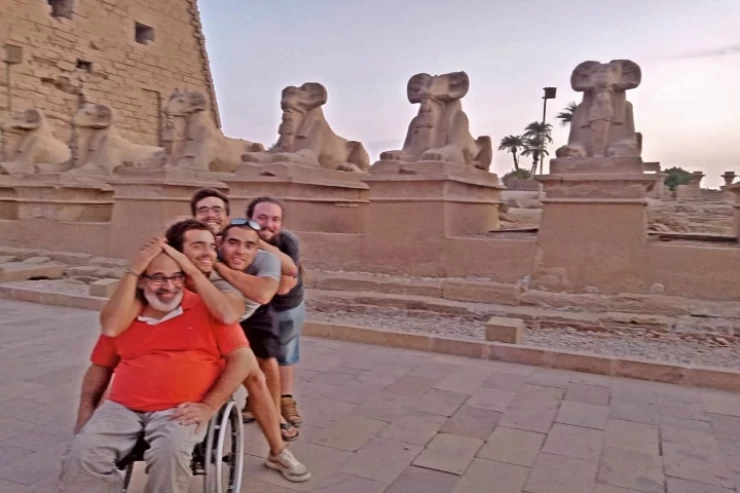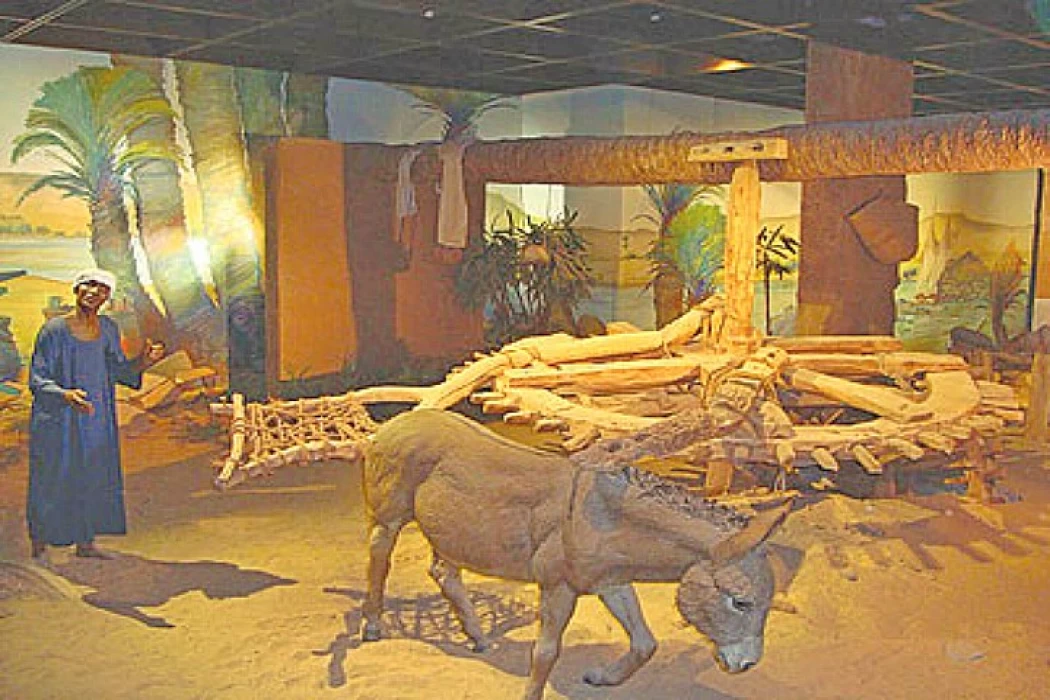
Nubia antigua | Historia de Nubia
Nubia (árabe nuba) Región del noreste de África, situada entre Egipto y Sudán, atravesada longitudinalmente por el Nilo, limitada al norte por las esclusas de Asuán, al este por el mar Rojo, al sur por la confluencia del Nilo Azul y el Nilo Blanco, y al oeste por el desierto de Libia. Sólo en las inmediaciones del Nilo, interrumpido por seis esclusas, hay una franja de tierra cultivable atravesada por vías férreas; aquí se encuentran los principales centros: el bereber, centro de las caravanas hacia el Mar Rojo, en la confluencia del Atbara; el antiguo centro de Wadi Halfa, en la frontera de Egipto y Sudán, fue inundado tras la construcción de la presa de Asuán.
Al principio de la época histórica (3500 a.C.), mientras la civilización egipcia adquiría rasgos cada vez más independientes, en Nubia continuaba un subneolítico retardado (las llamadas culturas de los "Grupos A y B"), que a finales del Reino Antiguo (2250 a.C.) se convirtió en una producción cerámica autónoma y rica (la llamada cultura del "Grupo C", que constituiría el trasfondo inicial de todas las superposiciones de la cultura egipcia del Reino Medio y del Reino Nuevo).
El Reino Antiguo sólo estaba interesado en explotar las minas de oro de las tierras nubias; en el Reino Medio, las expediciones militares emprendidas para proteger las fronteras meridionales del país y las rutas comerciales condujeron a la construcción de una serie de fortalezas egipcias a lo largo del río hasta Semnakh, al sur de la segunda catarata, sin que se produjera un proceso de amalgama con la población indígena.
Nubia (Arabic Nuba) A region of northeastern Africa, located between Egypt and Sudan, crossed longitudinally by the Nile, bounded on the north by the Aswan Locks, on the east by the Red Sea, on the south by the confluence of the Blue Nile and the White Nile, and on the west by the Libyan Desert. Only in the immediate vicinity of the Nile, interrupted by six locks, is a strip of arable land crossed by railroads; here are the principal centers: the Berber, the center of caravans to the Red Sea, at the confluence of the Atbara; the old center of Wadi Halfa, on the border of Egypt and Sudan, was inundated after the construction of the Aswan Dam.
At the beginning of the historical epoch (3500 B.C.), while Egyptian civilization was acquiring more and more independent features, a delayed sub-Neolithic (the so-called "Group A and B" cultures) continued in Nubia, which at the end of the Old Kingdom (2250 B.C.) developed into an autonomous and rich ceramic production (the so-called "Group C" culture, which would form the initial background of all overlaps of Egyptian Middle Kingdom and New Kingdom culture).
The Old Kingdom was interested only in exploiting the gold mines of the Nubian land; in the Middle Kingdom, military expeditions undertaken to protect the country's southern borders and trade routes led to the construction of a series of Egyptian fortresses along the river as far as Semnakh, south of the second cataract, without a process of amalgamation with the indigenous population or forms of expansion. Under the New Kingdom, under Thutmose I (1504-1492 BCE) in the
Nubian culture does not reflect the connotations and beliefs of its people. Tattoos are considered cultural symbols of Nubia for both men and women, as are murals, beadwork, and palm-frond and wickerwork, which attract tourists, especially foreigners.
The decorative elements, according to the State Information Service, carry specific connotations. The sword symbolizes heroism and courage, while the crescent and star symbolize optimism. The crow and owl are also symbols of bad luck and destruction.
It is called the Land of Gold. The name Nubia is derived from the word (Nub), which means gold in ancient Egyptian. It was also famous for the gold mines that were called Nubaria. In the dictionary, we find that the word Nub means: a generation of people living in a country named after them and located in the southern part of Egypt.
In another sense, the name is attributed to Nabata, the son of the Prophet Ishmael, peace be upon him, and since their rule of the Nile Valley and Africa, they mixed with the local tribes. Over time, many of the African tribes that were under the rule of the Nabataeans took the same title. It is now noticeable that there are dozens of tribes of different races under the same title, with different tongues, and the same title remained, which is the Nubians (Nuba).
It is a Nilo-Saharan language of the Eastern Sudanic branch in southern Egypt and northern Sudan. Most of its speakers lived in the Nile Valley, in what became Lake Nasser after the construction of the High Dam south of Aswan. Its speakers number approximately one million.
Between the eighth and fifteenth centuries AD, Nubians wrote their language in the Coptic alphabet with a few additional letters. However, today, they rarely write it, and those who write Nubian use Arabic or Latin script.







